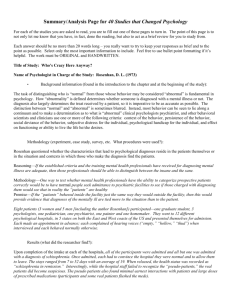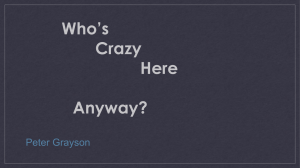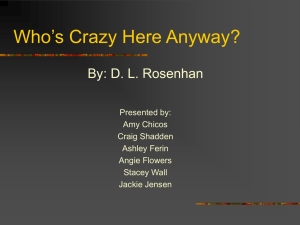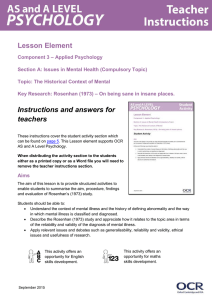Who's Crazy Here, Anyway
advertisement
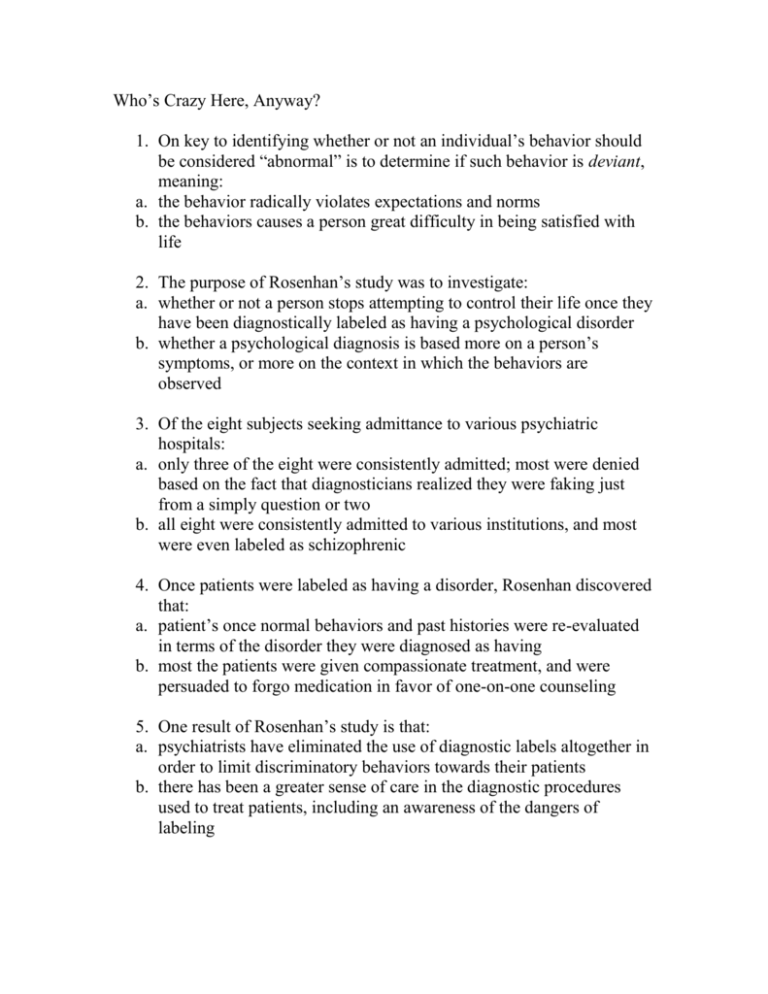
Who’s Crazy Here, Anyway? 1. On key to identifying whether or not an individual’s behavior should be considered “abnormal” is to determine if such behavior is deviant, meaning: a. the behavior radically violates expectations and norms b. the behaviors causes a person great difficulty in being satisfied with life 2. The purpose of Rosenhan’s study was to investigate: a. whether or not a person stops attempting to control their life once they have been diagnostically labeled as having a psychological disorder b. whether a psychological diagnosis is based more on a person’s symptoms, or more on the context in which the behaviors are observed 3. Of the eight subjects seeking admittance to various psychiatric hospitals: a. only three of the eight were consistently admitted; most were denied based on the fact that diagnosticians realized they were faking just from a simply question or two b. all eight were consistently admitted to various institutions, and most were even labeled as schizophrenic 4. Once patients were labeled as having a disorder, Rosenhan discovered that: a. patient’s once normal behaviors and past histories were re-evaluated in terms of the disorder they were diagnosed as having b. most the patients were given compassionate treatment, and were persuaded to forgo medication in favor of one-on-one counseling 5. One result of Rosenhan’s study is that: a. psychiatrists have eliminated the use of diagnostic labels altogether in order to limit discriminatory behaviors towards their patients b. there has been a greater sense of care in the diagnostic procedures used to treat patients, including an awareness of the dangers of labeling


